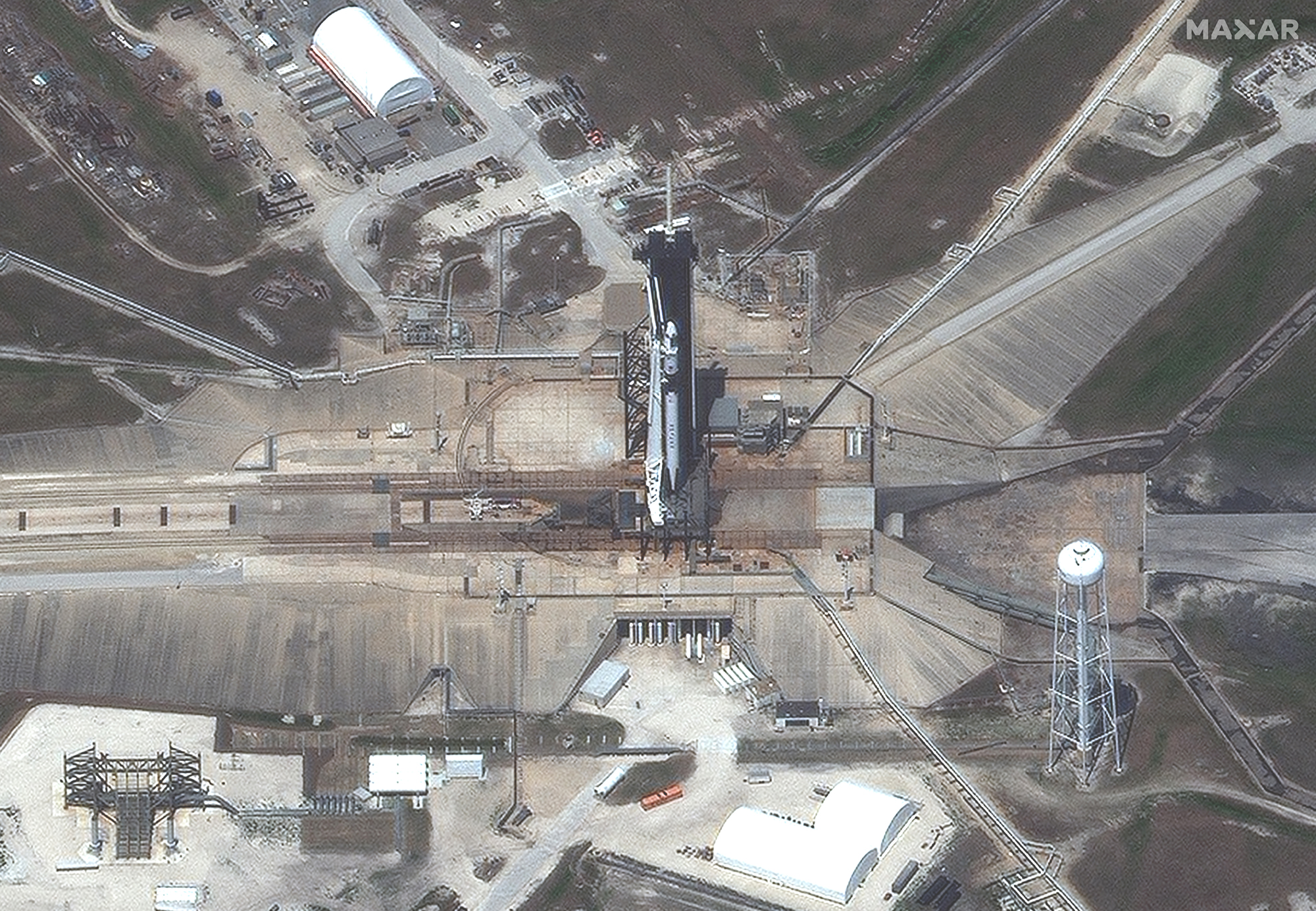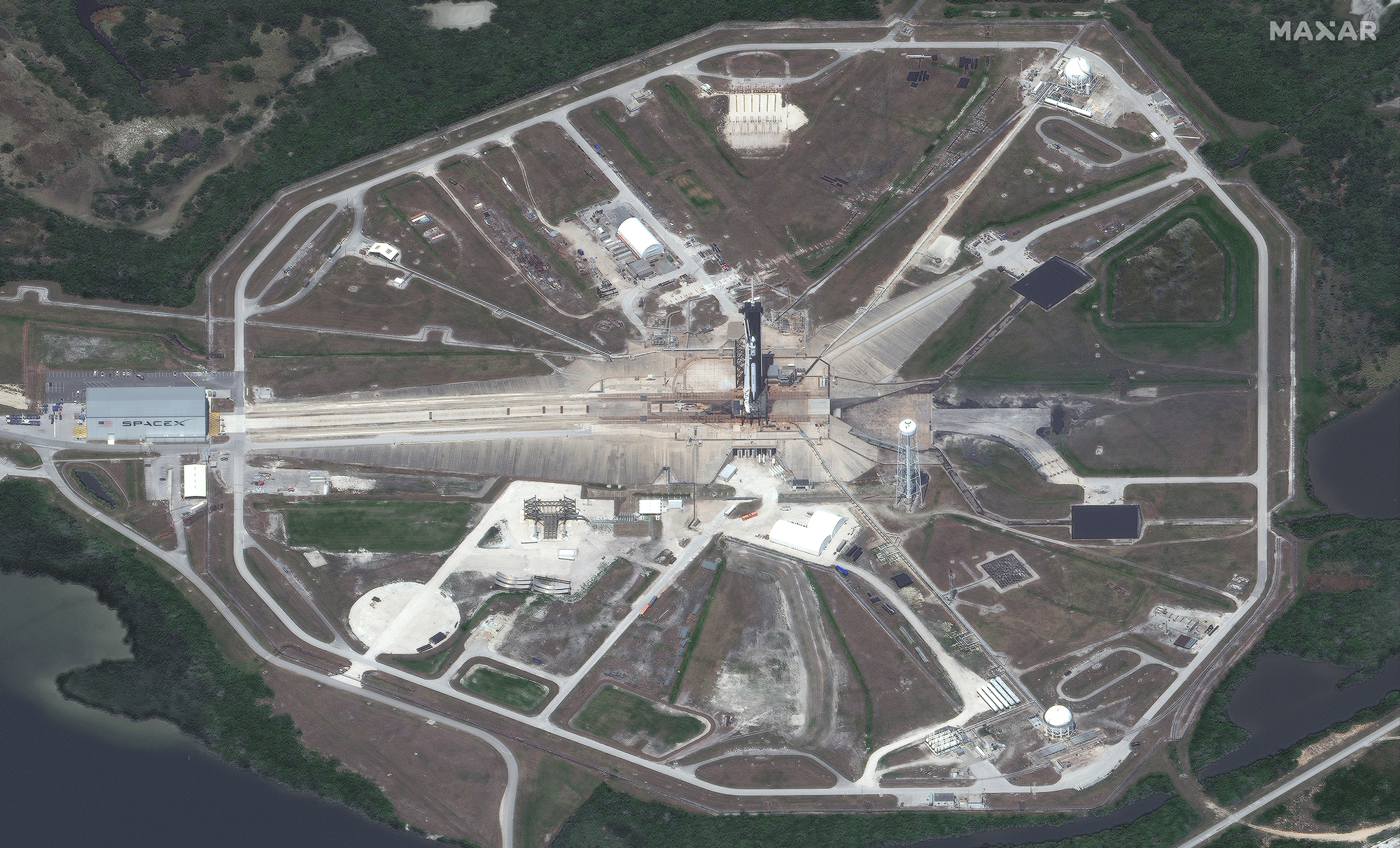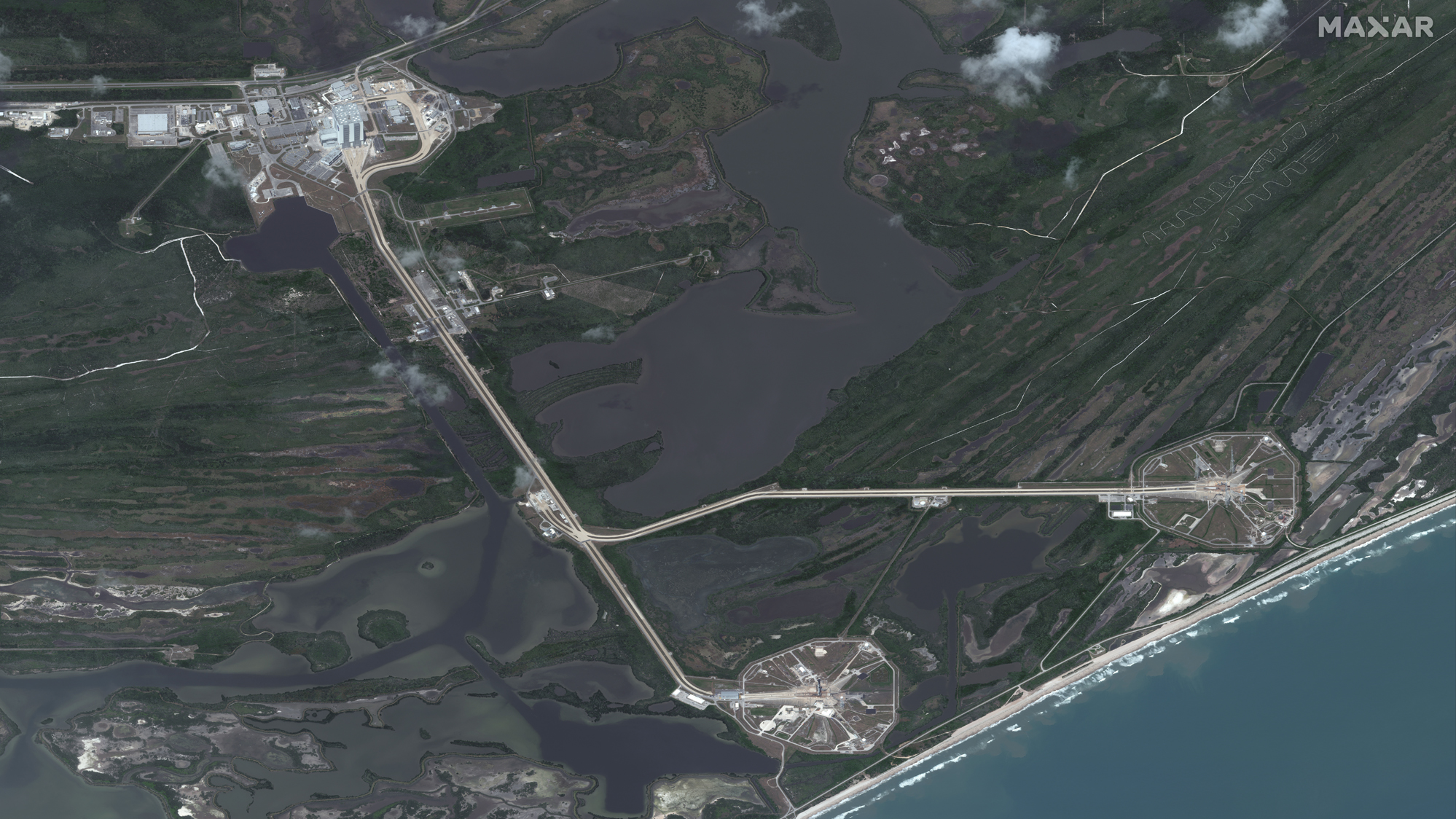Here's what SpaceX's 1st spaceship to carry astronauts looks like from space (satellite photos)
Maxar's WorldView-3 satellite spied Crew Dragon from orbit.

A satellite has spotted SpaceX's Falcon 9 rocket and Crew Dragon standing tall on a launch pad in Florida, ready for this week's historic crewed flight.
Astronauts haven't launched from Florida since 2011, when NASA retired its space shuttle fleet. That changes this week with a milestone launch called Demo-2, part of NASA's commercial crew program. NASA astronauts Bob Behnken and Doug Hurley will step inside a SpaceX Crew Dragon capsule and blast off to the International Space Station, with launch scheduled for Wednesday (May 27).
Maxar's WorldView-3 satellite caught a glance at their new ride on Saturday (May 23) at 11:51 a.m. EDT (1551 GMT). At the time its camera spotted the rocket, the satellite was about 400 miles (650 kilometers) east of NASA's Kennedy Space Center, soaring over the Atlantic Ocean.
Full coverage: SpaceX's historic Demo-2 astronaut launch explained
According to Maxar, the images were taken just as Behnken and Hurley stopped by the launch site for a dress rehearsal of the big day. During the rehearsal, a "dry-run" test that did not fuel the Falcon 9 rocket, the two astronauts donned their SpaceX spacesuits, headed to the launch pad in NASA-branded Tesla Model X SUVs and climbed inside their Crew Dragon craft to practice launch day activities.
While that was the last practice for launch, there are plenty of events to watch between now and the historic flight.
Related: SpaceX's historic Demo-2 mission explained in 13 steps
Get the Space.com Newsletter
Breaking space news, the latest updates on rocket launches, skywatching events and more!

On Monday (May 25), NASA will hold one last briefing on the mission; check back for final scheduling details from the agency. On Tuesday (May 26), Administrator Jim Bridenstine will update the nation from the countdown clock at Kennedy at 10 a.m. EDT (1400 GMT). The festivities on Wednesday will begin at 12 p.m. EDT (1600 GMT) with live views of the rocket on the launch pad.
Their flight is scheduled to blast off Wednesday at 4:33 p.m. EDT (2033 GMT), which will begin a 19-hour trip to the International Space Station.

You can watch all Demo-2 events live here on Space.com, courtesy of NASA TV, or directly at NASA's website.
Once at the orbiting laboratory, the duo will meet their new roommates, who have been in orbit since April, and bring the crew onboard up to five. Currently, NASA's Chris Cassidy is commanding the space station, joined by Russian cosmonauts Anatoly Ivanishin and Ivan Vagner. Behnken and Hurley will remain in space for between one and four months.
Visit Space.com daily for complete coverage of SpaceX's Crew Dragon Demo-2 flight.
- SpaceX Crew Dragon reaches launch pad for historic NASA astronaut launch
- See the Evolution of SpaceX's Rockets in Pictures
- In photos: SpaceX's historic Demo-2 test flight with astronauts
Email Meghan Bartels at mbartels@space.com or follow her @meghanbartels. Follow us on Twitter @Spacedotcom and on Facebook.
OFFER: Save 45% on 'All About Space' 'How it Works' and 'All About History'!
For a limited time, you can take out a digital subscription to any of our best-selling science magazines for just $2.38 per month, or 45% off the standard price for the first three months.
Join our Space Forums to keep talking space on the latest missions, night sky and more! And if you have a news tip, correction or comment, let us know at: community@space.com.

Meghan is a senior writer at Space.com and has more than five years' experience as a science journalist based in New York City. She joined Space.com in July 2018, with previous writing published in outlets including Newsweek and Audubon. Meghan earned an MA in science journalism from New York University and a BA in classics from Georgetown University, and in her free time she enjoys reading and visiting museums. Follow her on Twitter at @meghanbartels.
-
Edwin Carter Watching launch from Guam. I never knew a photo like this could be taken from space at 400 miles downrange?Reply










